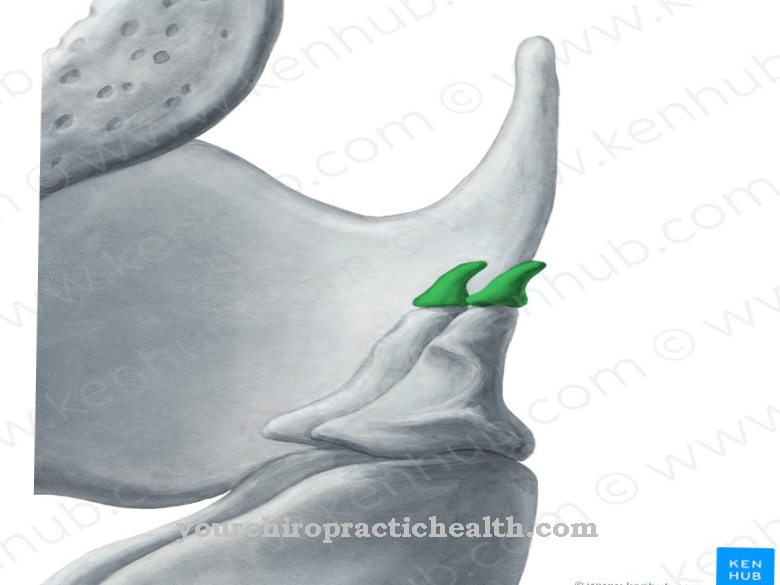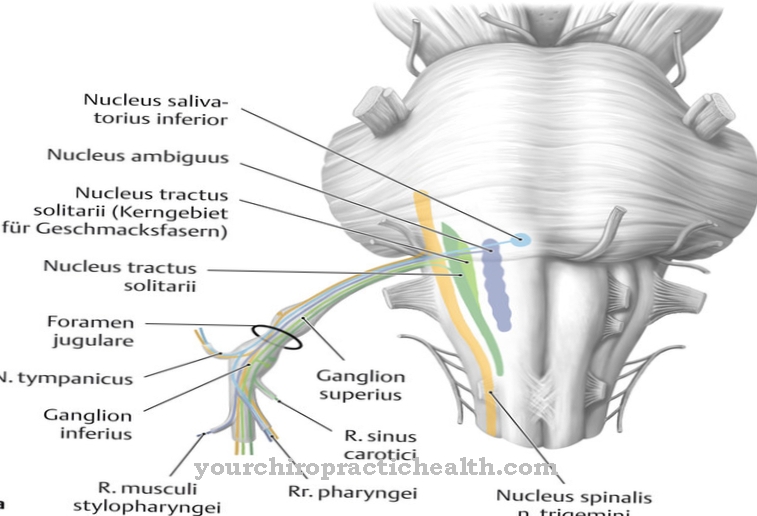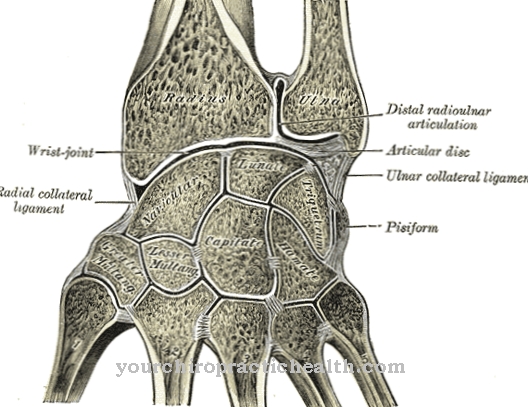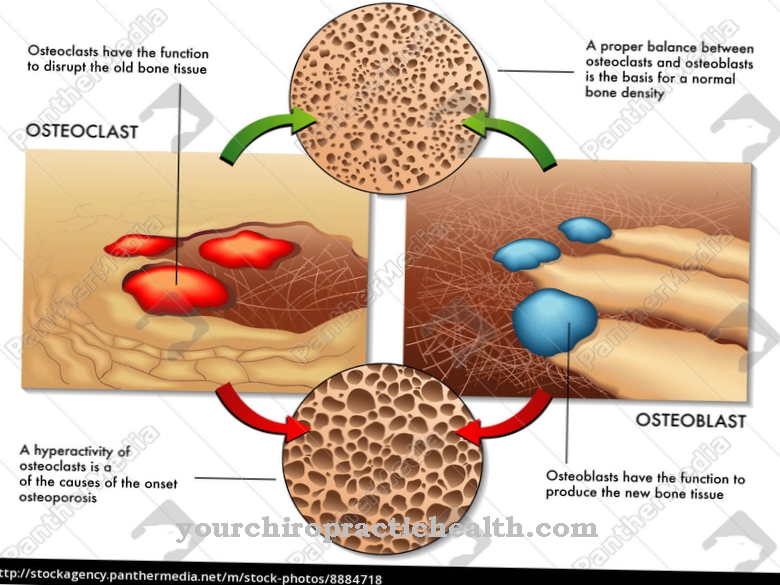The Medulla oblongata is the most caudal part of the brain and is also called Medullary brain designated. This brain region is best known as the center of breathing, reflexes and blood circulation. Loss of the medulla oblongata is associated with brain death and can cause bulbous brain syndrome, midbrain syndrome, or apallic syndrome.
What is the medulla oblongata?
The human central nervous system consists of the spinal cord and the brain. The latter is made up of different parts, all of which are associated with special functional fields. One such part is the medulla oblongata, also called the elongated pith, Spinal medulla globe or Bulbus cerebri is known.
It is the most caudal part of the brain located between the spinal cord and the midbrain or mesencephalon. Together with the bridge and the area of the cerebellum, the medulla oblongata forms the rhombencephalon, which is one of the most important reflex centers in the human body. The medulla oblongata arises in the embryonic development period from the myelencephalon, the so-called afterbrain. Functionally, the medulla oblongata part of the brain consists of three different areas: tegmentum, pyramis and olive. As is well known, the caudal part of the brain is home to the reflex center, the blood pressure and respiratory centers of the body.
Anatomy & structure
The medulla oblongata is bordered cranially by the bridge. Caudally, the brain region merges into the spinal cord and carries spinal nerves at the outlet. The cranial nerve nuclei lie in the dorsal tegmentum of the medulla oblongata. In the ventral part of the region are the pyramides and olives. The posterior cords of the spinal cord end in the tuberculum gracile and in the tuberculum cuneatum within the dorsal area.
The dorsal nucleus gracilis and cuneatus lie at this point and form the ends of epicritically sensitive nerve fibers. In the ventral part of the medulla oblongata sit the pyramids made of nerve fibers of the pyramidal tracts. The pyramid railway crossing is immediately below. Lateral to the zone are the olives, which together with the olive pits contain core areas of fine motor coordination. The hypoglossal nerve or XII. Cranial nerve exits between olives and pyramides. On the outer surface there is a depression known as the mediana anterior medullae oblongatae fissure.
Function & tasks
The medulla oblongata contains important neuronal centers for blood circulation, breathing and reflex motor skills. Reflexes are automated sequences of movements that follow a certain stimulus and cannot be arbitrarily controlled. Many human reflexes are so-called protective reflexes, such as the sneeze and cough reflex. The breath reflex is also a vital reflex.
Every reflex movement is preceded by an external or internal stimulus, which is registered by the sensory cells of perception and which reaches the central nervous system via afferent nerve pathways. In the central nervous system, the reflex arc switches the incoming action potential to efferent nerve pathways, via which the excitation reaches the effector organs. The reflex center of the medulla oblongata plays a crucial role in these processes and is therefore relevant for the swallowing, sucking and coughing reflexes, for example.
In addition, the vomiting center is in the medulla oblongata: another protective mechanism of the human body. In addition, there are many receptors in the caudal part of the brain that are involved in regulating the acid-base balance. These receptors are also known as chemo-sensors in technical terms. All descending connecting pathways between brain areas such as the cerebrum and the spinal cord also pass through the medullary brain.
On the other hand, ascending pathways from the spinal cord run through the medulla oblongata and are switched over in the medullary brain, for example the pathway of the posterior cord. With these functions, the medulla oblongata takes over a large part of all work processes that are necessary for human life.
Diseases
As a rule, the total loss of the medulla oblongata is associated with the death of the patient. In this case we are talking about brain death, which, unlike cardiac death, corresponds to absolute death. A total failure of the part of the brain can occur, for example, in the context of severe spinal cord injuries after a traffic accident.
If the patient's cerebrum is still largely inoperative, it is referred to as partial brain death. A cerebral failure alone does not justify the diagnosis of brain death, as the patient can at least continue to live physically with the help of the medulla oblongata and the body functions it regulates. A patient with an intact medulla oblongata does not need artificial respiration even in the case of cerebral failure. However, the consequence of such a scenario is a deep coma with mostly Apallic syndrome. This is a clinical picture that is caused by severe brain damage and includes a functional failure of the cerebral function, while the diencephalon, brain stem and spinal cord continue to function.
As a result, patients appear awake but are unlikely to be able to communicate. If the brainstem functions within the medulla oblongata fail, it is again referred to as bulbar brain syndrome. This symptom complex usually arises as a result of a midbrain syndrome and begins with atactic breathing or gasping and breathing stops. The patient falls into a deep coma. The muscle tension all over the body relaxes and the pupils that are rigid with light widen. Reflexes like the corneal reflex disappear and the eyeballs assume a divergent position. In most cases the clinical picture is the result of compression. The medulla oblongata became particularly jammed on the cerebellar tonsils. The outcome of this phenomenon is usually fatal.



























